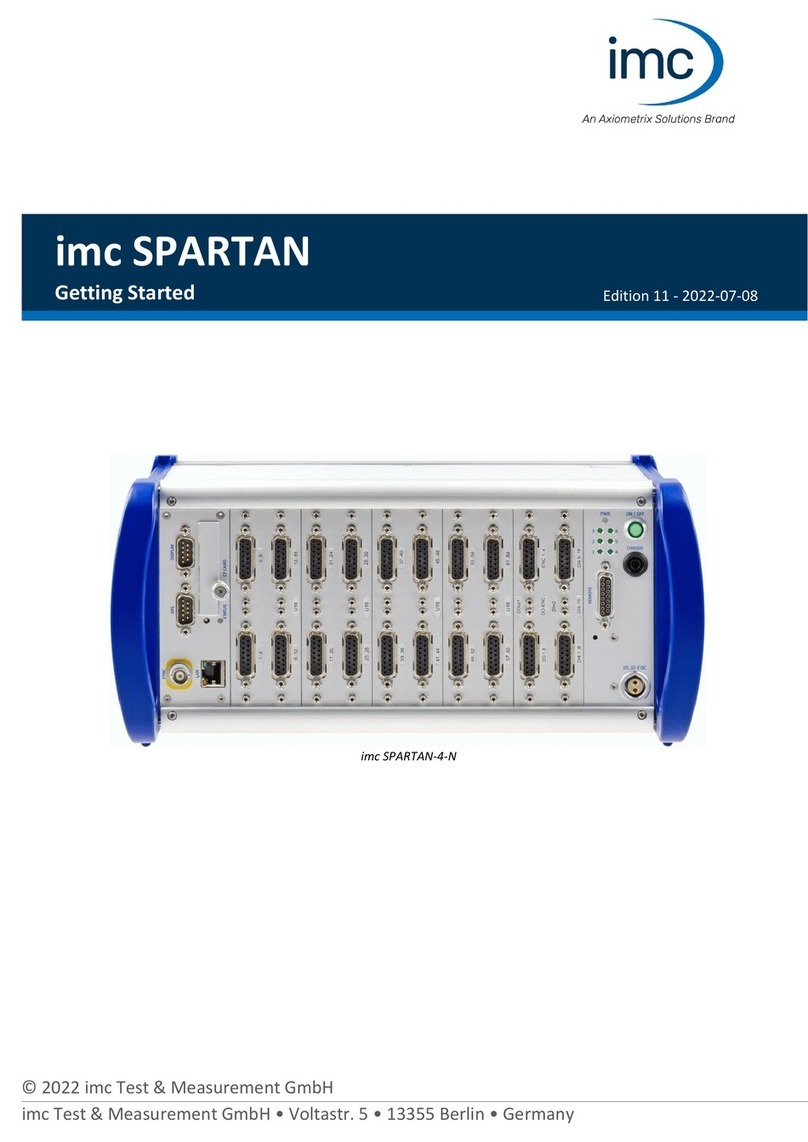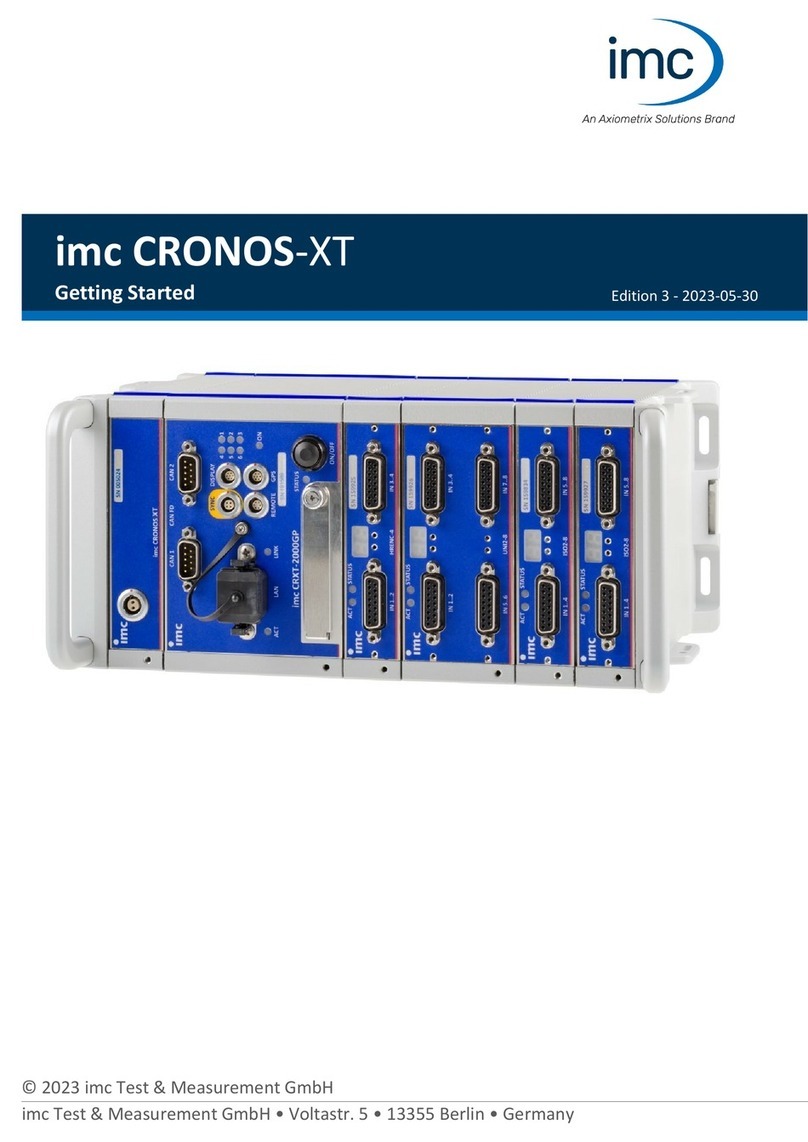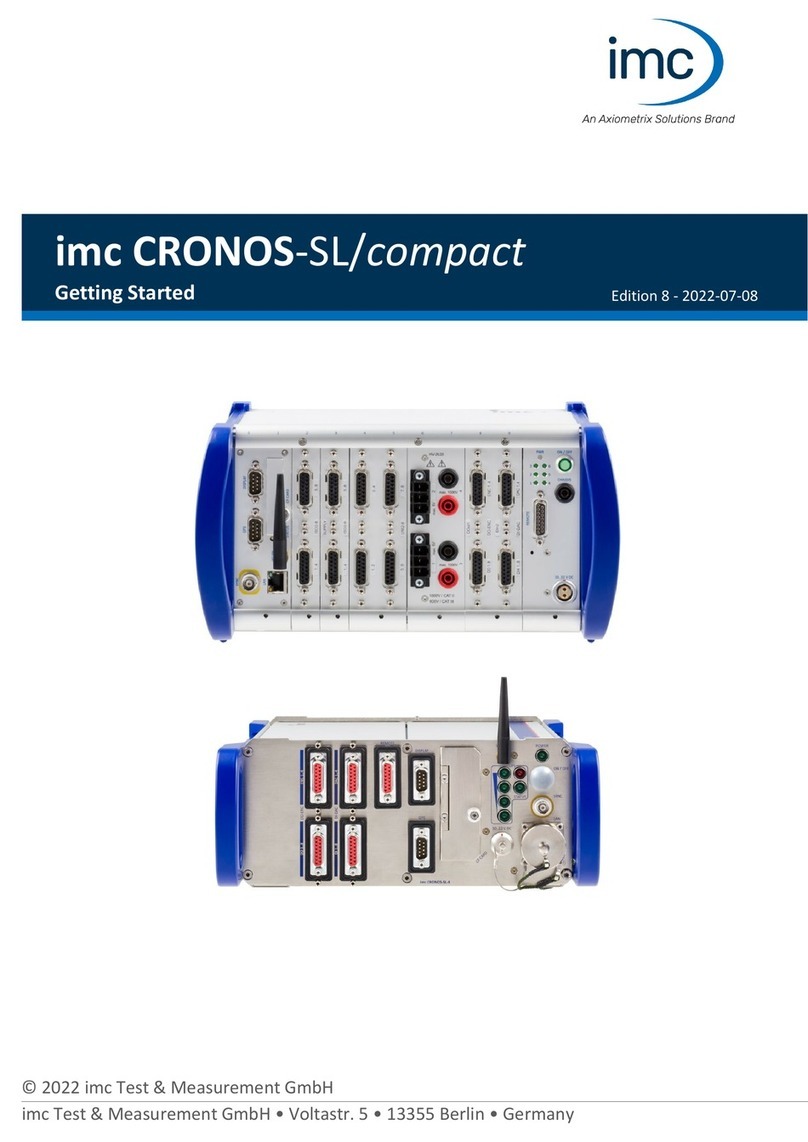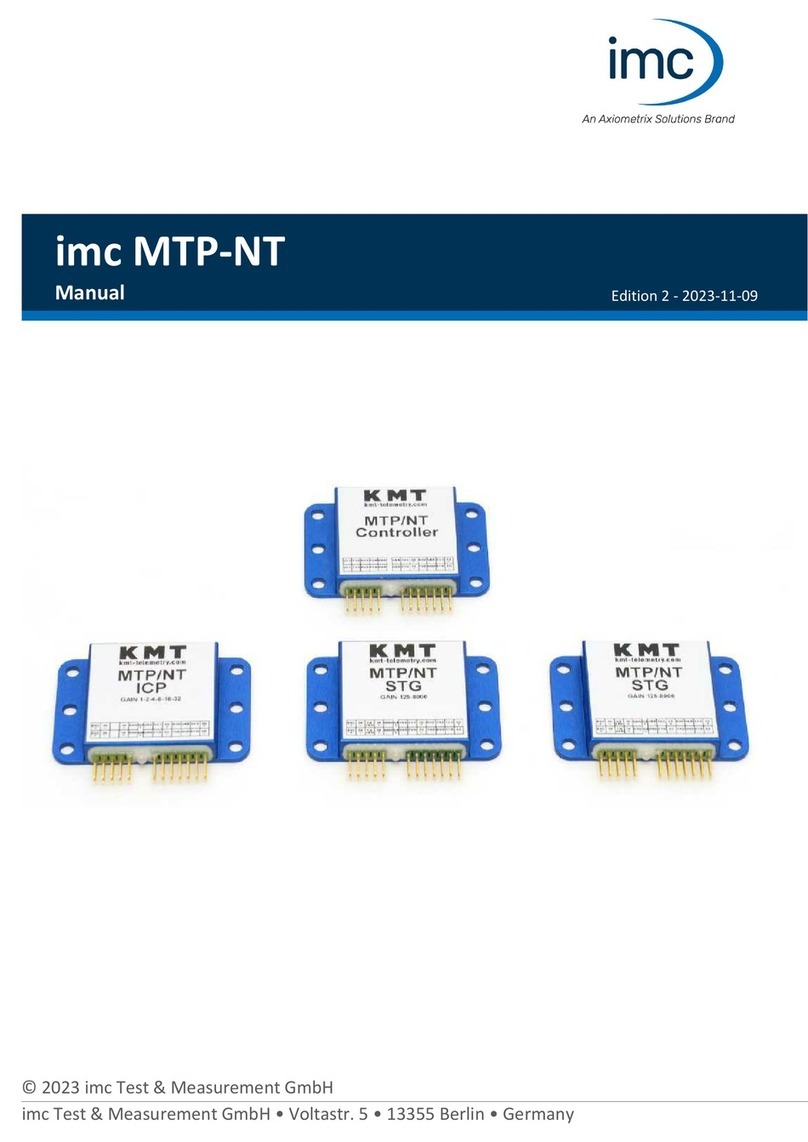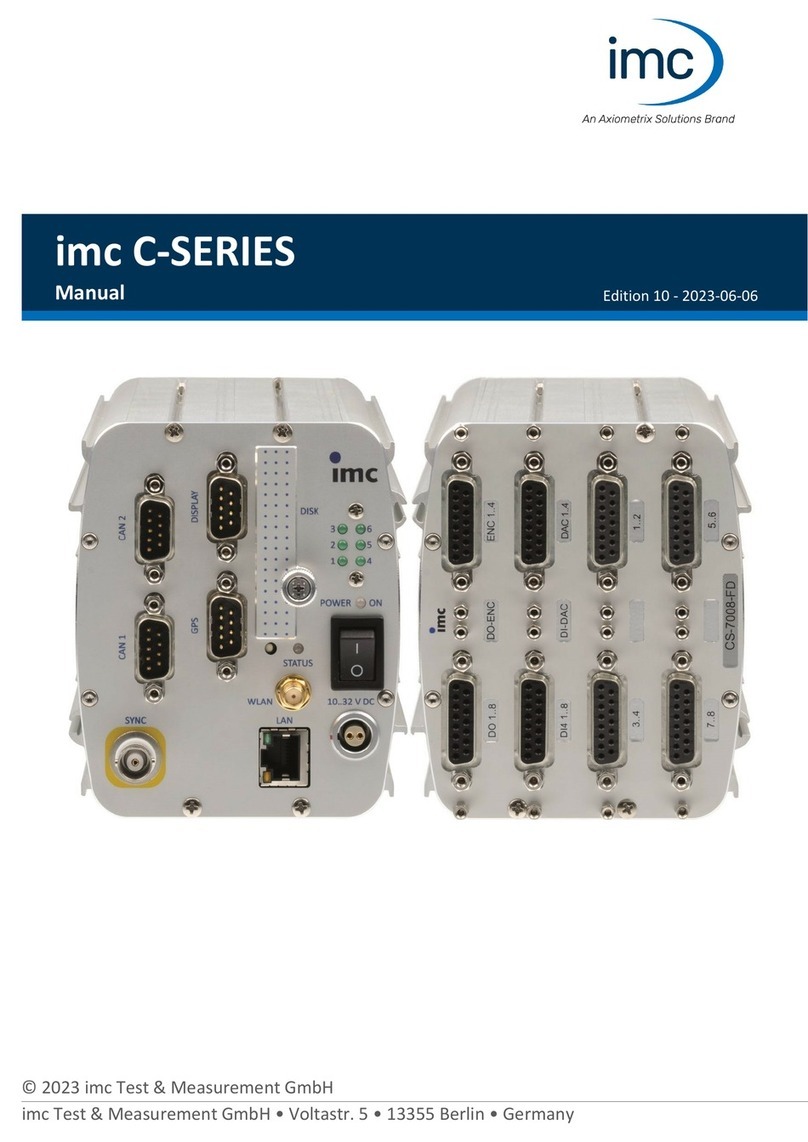
© 2023 imcTest & Measurement GmbH imc CRONOSflex - Getting Started, Edition 11 - 2023-05-30
Page 4
Table of contents
Table of contents
1 General introduction ................................................................................................. 6
1.1 imc Customer Support / Hotline .................................................................................................... 6
1.2 Legal notices ................................................................................................................................... 6
1.3 Explanation of symbols .................................................................................................................. 9
1.4 Last changes in content ................................................................................................................ 10
2 Safety ...................................................................................................................... 11
3 Assembly and connection ........................................................................................ 14
3.1 After unpacking... ......................................................................................................................... 14
3.2 Before commisioning ................................................................................................................... 14
3.3 Precautions for operation ............................................................................................................ 15
3.4 Attachment mechanism ............................................................................................................... 16
3.5 Signal connection ......................................................................................................................... 17
3.6 imc CRONOSflex Description of the system ................................................................................. 18
3.6.1 Building Block Principle Maximizes Flexibility .................................................................................................. 18
3.6.2 System bus ........................................................................................................................................................ 18
3.6.3 Modular components "click" together ............................................................................................................. 18
3.6.4 Distributed measurement system .................................................................................................................... 18
3.7 Networking and power supply ..................................................................................................... 19
3.8 Main switch .................................................................................................................................. 21
3.8.1 Remote control of the main switch .................................................................................................................. 21
3.9 Power over EtherCAT (PoEC) ........................................................................................................ 21
3.10 Removable storage ..................................................................................................................... 21
3.11 Saving data in case of power outage ......................................................................................... 22
3.12 Stabilized device supply and UPS (Power Handle) ..................................................................... 22
3.12.1 Li-Ion batteries ................................................................................................................................................ 22
3.13 Isolation and grounding concept ............................................................................................... 24
3.13.1 Isolation .......................................................................................................................................................... 24
3.13.2 Grounding concept ......................................................................................................................................... 25
3.14 Power supply options (CRFX) ..................................................................................................... 26
3.14.1 Overview of power supply options ................................................................................................................. 26
3.14.2 Rules governing supply configurations ........................................................................................................... 27
3.14.3 Directly stacked modules ................................................................................................................................ 28
3.14.4 Overall system consisting of multiple blocks .................................................................................................. 29
3.14.5 Supplemental device power supply (Power Handle) ...................................................................................... 30
3.14.6 Overview of available operation and remote control modes ......................................................................... 31
3.14.7 Charging the internal battery of a Power-Handle having UPS-functionality .................................................. 32
3.14.8 Power over EtherCAT operation ..................................................................................................................... 34
3.15 Overview power consumption ................................................................................................... 35
3.16 Internal system-bus: Network cables ........................................................................................ 36
4 Maintenance and servicing ...................................................................................... 37
4.1 Maintenance and servicing .......................................................................................................... 37
4.2 Cleaning ........................................................................................................................................ 38
4.3 Storage ......................................................................................................................................... 38
4.4 Transport ...................................................................................................................................... 38
5 Start of operation Software / Firmware ................................................................... 39
